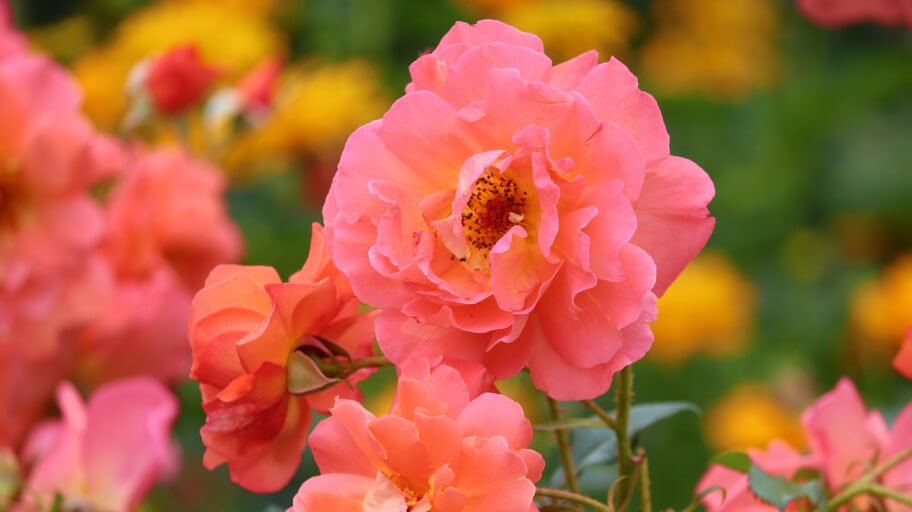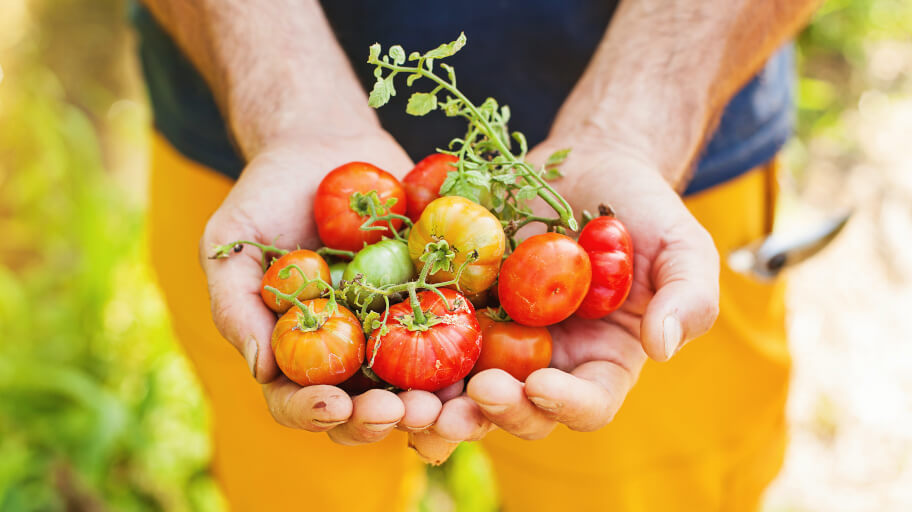
What if we told you there’s no need to battle Mother Nature daily in your garden? What if instead, she could do your work for you? Do-Nothing gardening does just that. An almost wild, fully organic garden that basically cares for itself. No digging either! This is not to say the whole thing will just spring in your backyard by the power of wishful thinking. With a little know-how, a proper start will do the rest.
What is no dig gardening?
No-dig gardening is a non-cultivation method of organic gardening. Masanobu Fukuoka, a Japanese farmer and philosopher, is considered the original pioneer of the method, starting his research in 1938 and later in 1975 published the book The One-Straw Revolution as a result of his studies.
Fukuoka also describes his method as “do-nothing farming”, which relates to avoiding the use of artificial fertilisers and gardening tools. You still have to put effort, but a different kind of effort.
Fukuoka saw farming both as a way to produce food and a spiritual approach to life.
Do-Nothing farming works in conjunction with the biodiversity of the area you are farming in and is supposed to help the complexity of both flora and fauna with the mind of creating a working ecosystem inside your garden.
This, in turn, helps your produce grow healthier. This is done through continuous observation with a heavy emphasis on the initial setup of the plot to facilitate plant growth that does not require additional input on your part.
The No-Dig method takes advantage of the natural soil food web, which is necessary for the cycle of nutrients and the prevention of harmful organisms and diseases. Plants transfer part of the carbon they produce to the soil, where it, in turn, feeds microbes that convert organic elements available in the soil to mineral elements that the plants feed on.
Fukuoka was convinced that this method of gardening can reverse water pollution, soil erosion, and biodiversity loss, at the same time providing sufficient amounts of food. While that is completely true, Do-Nothing Gardening can’t be replicated on an industrial scale.
No-Dig gardening was popularised in Australia thanks to Esther Deans in the same period as when Fukuoka’s book came out. She wrote No-Dig Gardening and Leaves of Life. Esther travelled all around Australia to actively teach this method of gardening, including promoting it to people with special needs and emphasising the necessity to maintain water quality.
She continued gardening until the age of 95 and is the inspiration for Bill Mollison’s development of permaculture.
The principles of do-nothing farming
The philosophy behind Do Nothing Gardening is that people are not separate or above nature, but part of it. So in this sense, there is not a precise recipe for how to do it, because local conditions will vary widely. Instead of a structured method, No-Dig Gardening offers principles to support the mindset of going about it.
- No tilling
- No fertilising
- No herbicides or pesticides
- No weeding
- No pruning
Although many of the described plant varieties and practices in The One Straw Revolution relate tightly to the conditions in the author’s home region, the philosophy and principles have been used extensively all around the world to great effects.
Do Nothing Gardening diminishes the need for human labour in favour of nature’s production of food providing plants as it would in a bio-diverse agricultural ecosystem. When ploughing is omitted the topsoil remains protected by the growing plants. Seeds will germinate without the need of being sown so long as the right conditions are met. The soil must remain protected by ground cover plants and often herbs are used for this as they could also provide a benefit to the gardener. Ground cover is present along with grain plants, vegetable crops and orchards. Animal variety present is also encouraged as long as it’s not detrimental to the ecosystem.
In Fukuoka’s case, those would be chickens running free in orchards, ducks and carp populating rice fields. He specifically used the spider population in his fields as a meter for sustainability. His philosophy and practices directly challenged the need for mechanised farming to achieve high productivity instead of small-scale operations. Despite his family farm is larger than the Japanese average he used a single field of grain crops as a small-scale example of his method.
How to practice no-dig gardening
The most important thing is to set up your garden in such a way that will let nature do the cultivation for you.
Spreading an organic layer between 5 and 15 centimetres thick over the soil surface to serve as mulch is the most widely used practice. This layer can be:
- Ripened manure
- Compost
- Old straw
- Mushroom compost
- Leaf mould
Creativity is the limit. This layer is mixed into the soil of your garden through the worm, insect and microbe activity. Furthermore, worms and other denizens of the soil assist with its structure improving aeration and drainage with their tunnels and binding together soil particles with their secretions. This natural biosphere promotes health in the topsoil layer where the annual plants root and enables them to thrive.
This natural balance of minerals and organic life contributes to greater disease resistance and aids the buildup of beneficial soil fungi. As a result of this organic top layer, moisture is also retained much more efficiently. Slower percolation also means less lost nutrients for your produce.
When you find the ground layer plants have grown too tall you can cut them and leave them there as mulch too. This will return their nutrients to the soil beneath and also suppress weed growth. This will also allow you to sow seeds in the same area, as the ground layer will hide them from birds. Leaving the straw from previous crops or the aforementioned unneeded plants as mulch improves the nitrogen fixation in the soil.
A method of creating a no-dig garden bed is the so-called sheet mulching.
How to make a no-dig garden bed (sheet mulching)

Step 1: Choose your area and clean it from large debris. Remove perennial weed roots but don’t get obsessive. The next step will take care of that.
Step 2: Cover the area with wet paper or cardboard. The water will help it lie flat on the ground. This layer will prevent weeds from taking over and suffocate them. Upon decomposition, they’ll feed your plants.
Step 3: Layer lucerne or any suitable fodder. Hay does the job too.
Step 4: Spread manure over that. It’s advisable to use aged but not dry manure.
Step 5: Another layer of fodder atop of it.
Step 6: Now add over all that a mix of soil and compost.
Step 7: Top off the bed with an organic mulch.
Step 8: Plant the seeds.
This is a much more effortless method than digging and requires pretty much nothing but time. It’s a slow but long-term process since once you set up your No-Dig garden and reach the critical organic mass to sustain the needed biodiversity of your miniature ecosystem it will care for itself.
Don’t have time for no-dig gardening?
Book a Fantastic Gardener!








